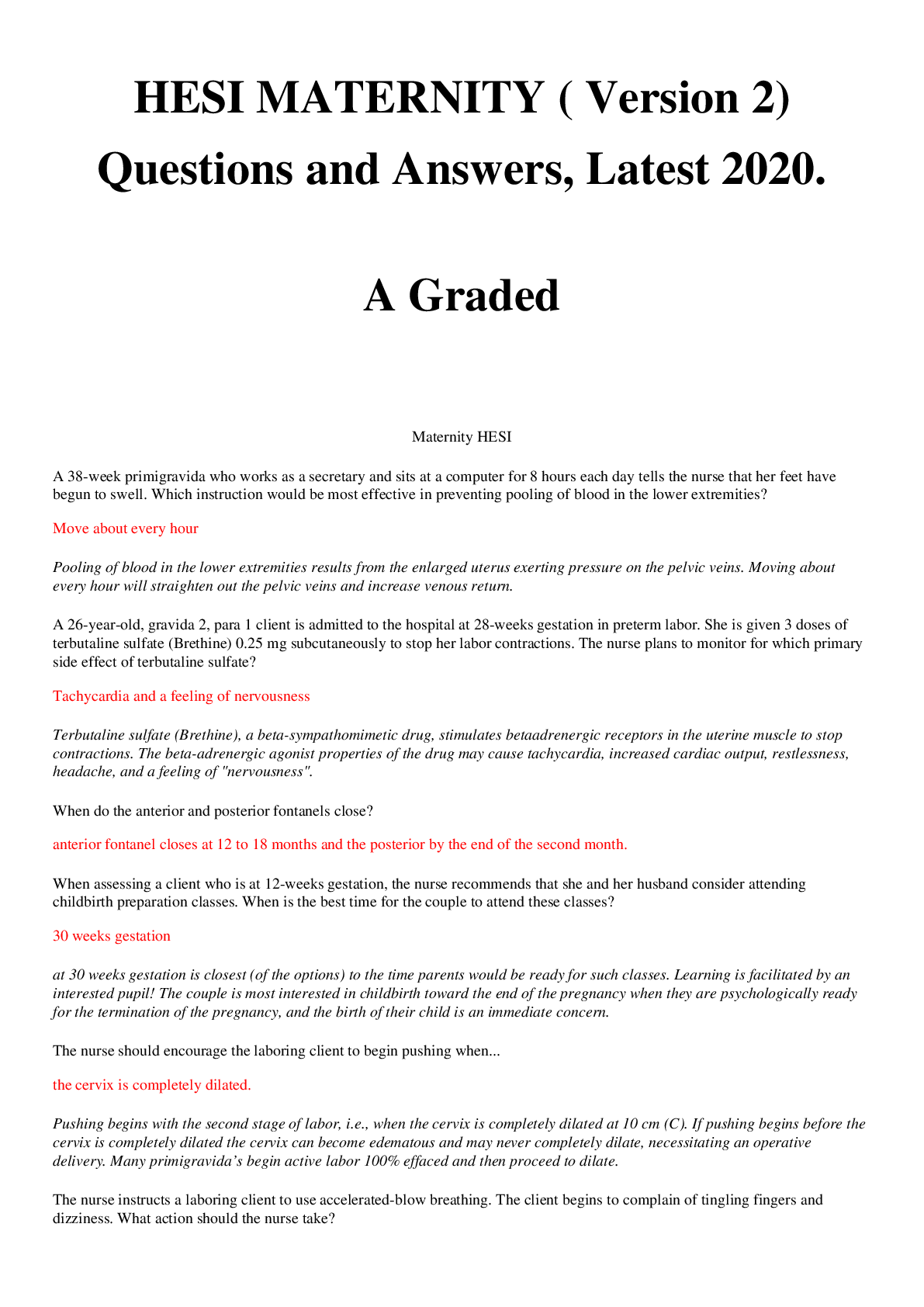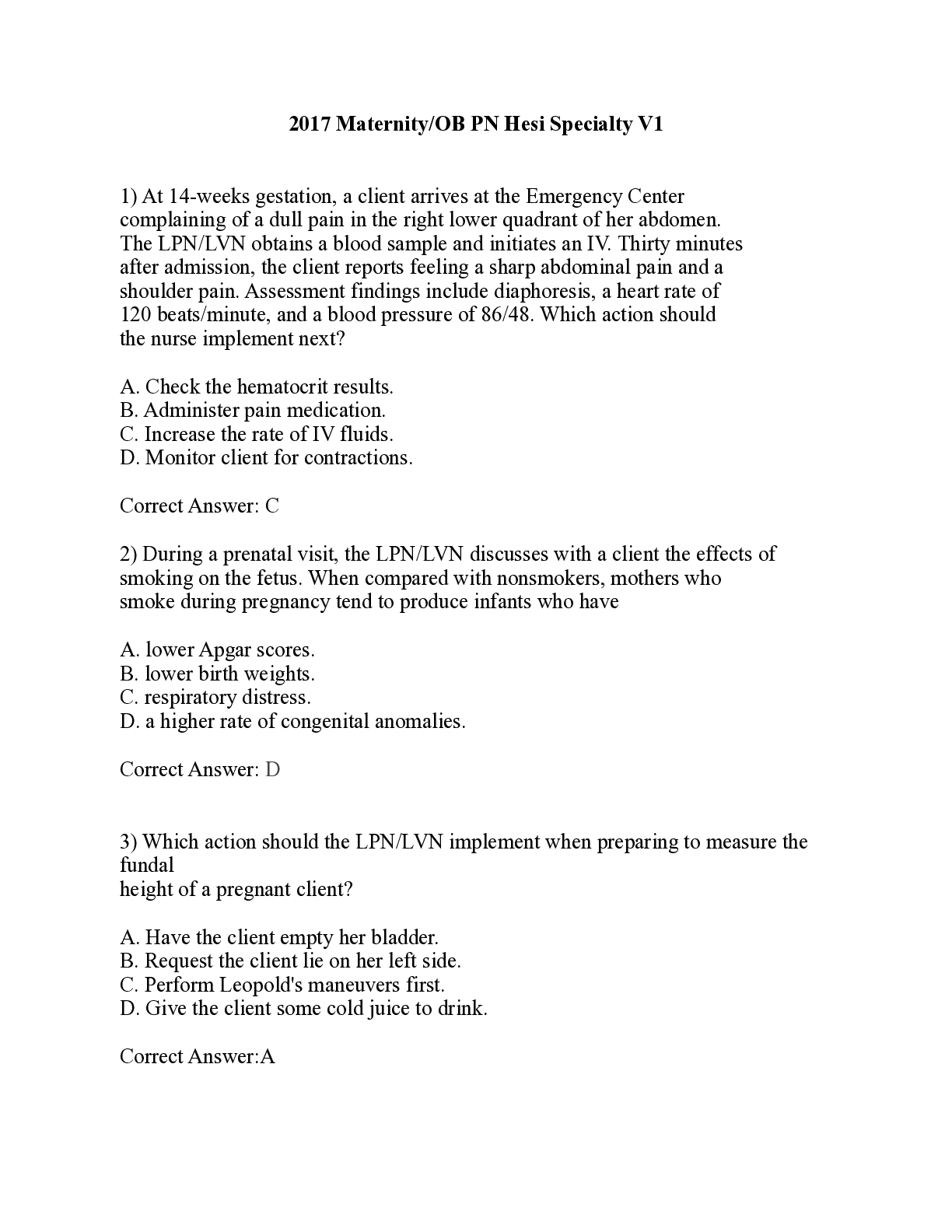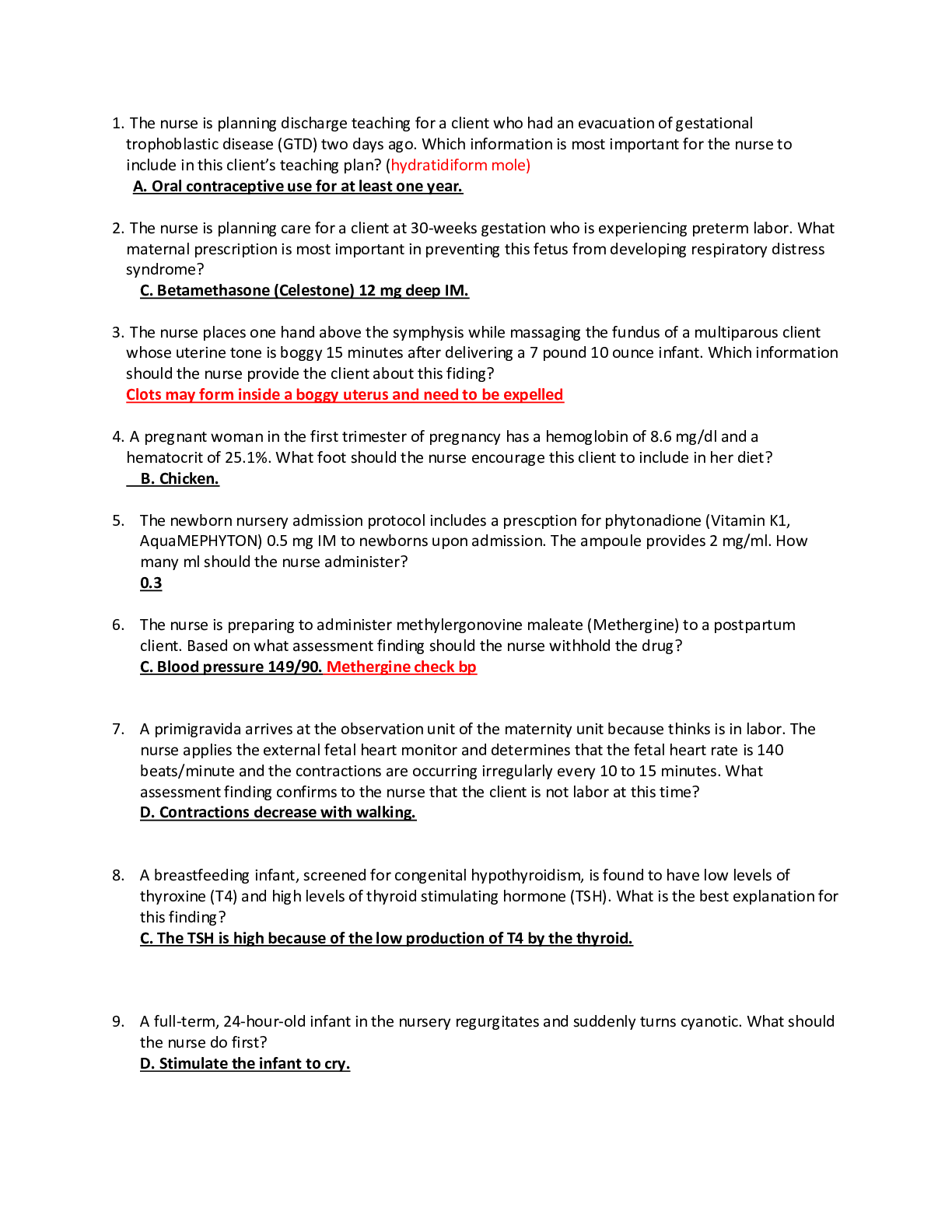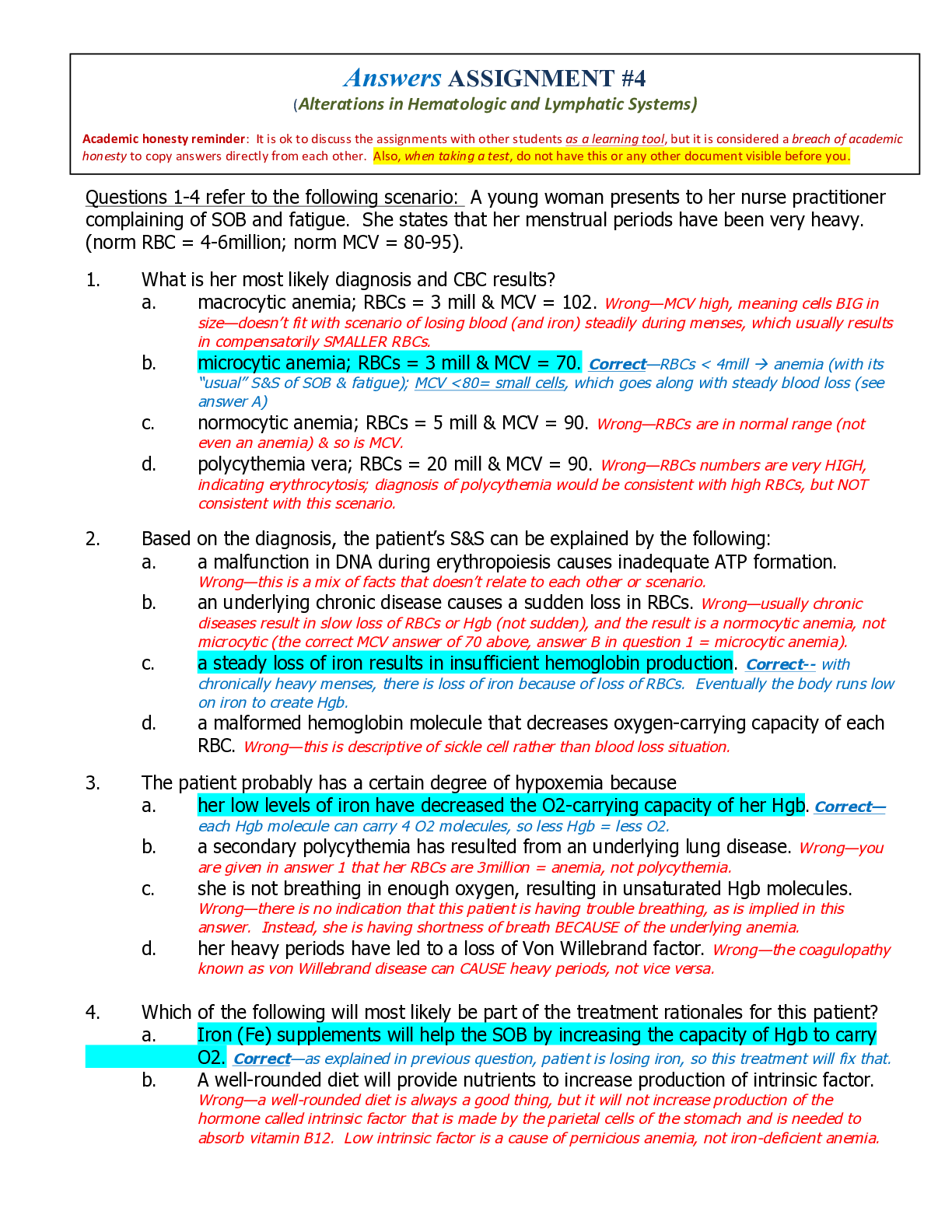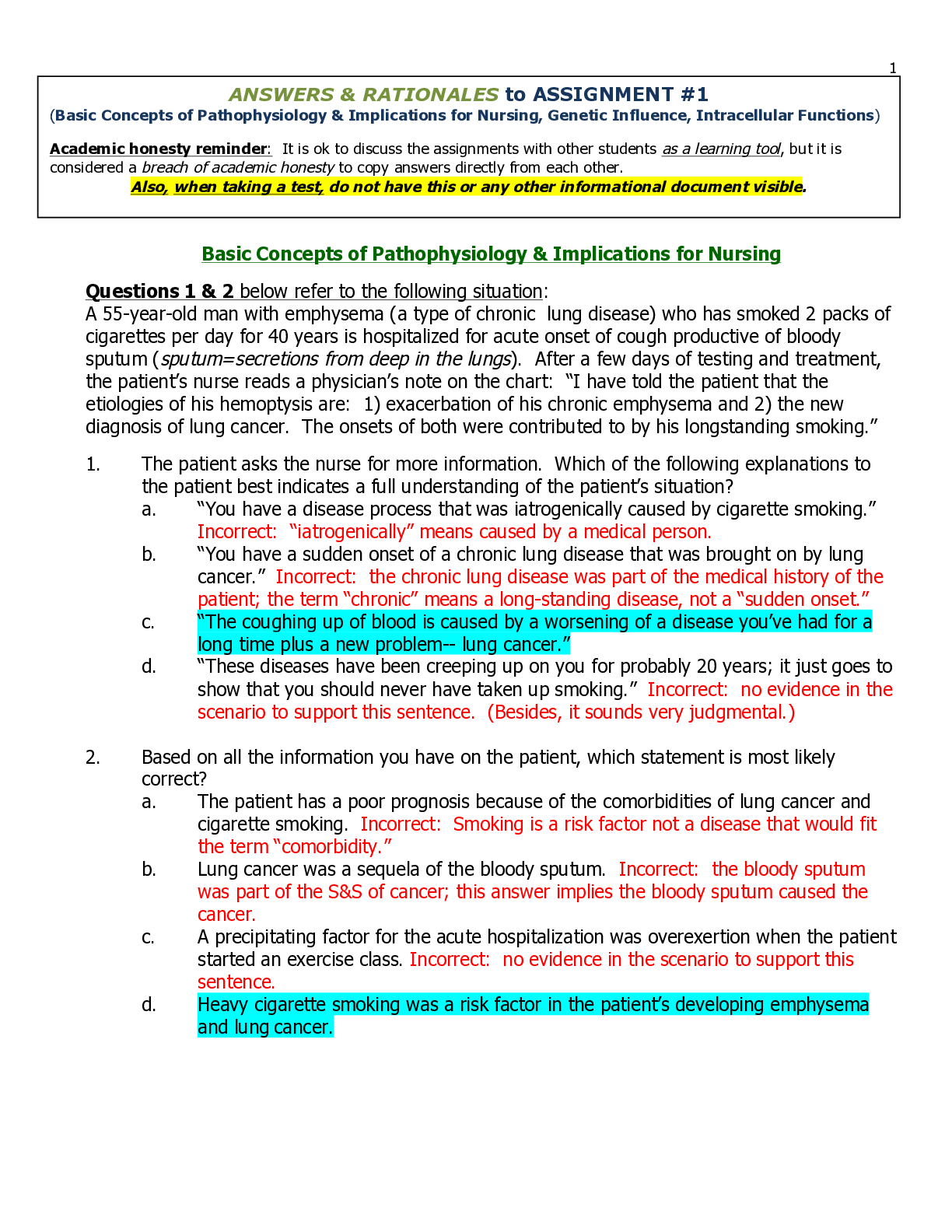NURS 3366 / NURS 3366 ASSIGNMENT 5 ANSWERS, CIRCULATORY SYSTEM DISORDERS
Document Content and Description Below
1. A patient has intermittent claudication and a history of atherosclerosis. What other findings are most likely? a. pitting edema of the ankles. Wrong—edema is associated with venous issues, not ... arterial (everything in stem of question points to arterial: intermittent claudication = PAD, atherosclerosis = arterial prob.) b. jugular vein distention. Wrong—associated with RHF in which there is back up of venous blood into jugular veins. c. cool feet with diminished pulses. Correct—atherosclerosis blocks arterial flow to distal areas; intermittent claudication means basically “limping because of ischemic pain,” so you link this with PAD & diminished flow to feet. d. S&S of increased preload. Wrong—increased volume is not a part of this scenario. 2. A patient is diagnosed with venous insufficiency. What treatment is most likely and why? a. a clot-busting medication, because it is used to dissolve arterial clots that block off flow. Wrong—venous insufficiency = venous prob, not arterial (“arterial clots” is in stem of question) b. drop the legs lower than the heart so that circulation can bypass DVTs. Wrong—venous issues = raise feet. c. complete bedrest, as venous stasis is the best way to prevent thrombosis. Wrong— blood should never be static! increases risk for thrombus. d. elevation of feet as often as possible, because it enhances venous return. Correct – think of venous insufficiency as “insufficient ability to get venous flow back UP to the heart” (often due to incompetent venous valves) so that blood pools in veins in the feet. ***Questions 3-7 refer to this scenario: A patient with a history of atherosclerosis and HTN is complaining of chest pain, SOB, and pain radiating to his left arm. He is diagnosed with an MI of his left ventricular wall. 3. What S&S would be expected and would indicate decreased CO /perfusion? a. ankle edema and varicose veins. Wrong—atherosclerosis & HTN are arterial dzs; ankle edema & varicose veins relate to venous issues. b. decreased urine output and capillary refill of 4 seconds. Correct – an MI will be a negative inotrope—it will decrease contractility of the heart muscle and thus decrease stroke volume, which in turn decreases CO (see concept map); decreased CO means less perfusion to the body!delayed capillary refill as well as diminishment of organ efficiency such as that of the kidneys. c. BP of 190/90 and capillary refill of 2 seconds. Wrong—capillary refill of 2 sec. is normal. d. strong, bounding DP & PT pulses. Wrong—with decreased CO, you are more likely to have decreased, weaker pulses. 4. Lab work done during the MI most likely shows high blood levels of certain substances, including: a. troponin. Correct—increase in serum troponin almost always means cardiomyocytes injury/death, since troponin is a substance usually only found in the heart cells. b. BNP. Wrong—BNP is increased in HF, not MI. c. histamine Wrong—histamine MAY be increased because of inflammatory side of MI, but it is more subtle and not measured as lab work. d. inotropes. Wrong—the word inotrope means having to do with contractility; it’s not usually a measurement in terms of labs, etc. answers ASSIGNMENT #5 (Circulatory System Disorders) Academic honesty reminder: It is ok to discuss the assignments with other students as a learning tool, but it is considered a breach of academic honesty to copy answers directly from each other. Also, when taking a test, do not have this or any other document visible before you.5. He develops a blood pressure of 80/50. Which statement is most accurate? a. The patient is in cardiogenic shock and should be given meds to increase SVR (systemic vascular resistance). Wrong—the first part is correct, but you would never give medications to increase afterload for a patient whose heart is already struggling (cardiogenic = heart-related). b. The patient should be given a negative inotrope, as this will cause vasodilation. Wrong—inotrope means related to contractility; a negative inotrope means something that suppresses contractility, not causes vasodilation. [Show More]
Last updated: 1 year ago
Preview 1 out of 22 pages
Instant download

Buy this document to get the full access instantly
Instant Download Access after purchase
Add to cartInstant download
Reviews( 0 )
Document information
Connected school, study & course
About the document
Uploaded On
Feb 08, 2021
Number of pages
22
Written in
Additional information
This document has been written for:
Uploaded
Feb 08, 2021
Downloads
0
Views
39


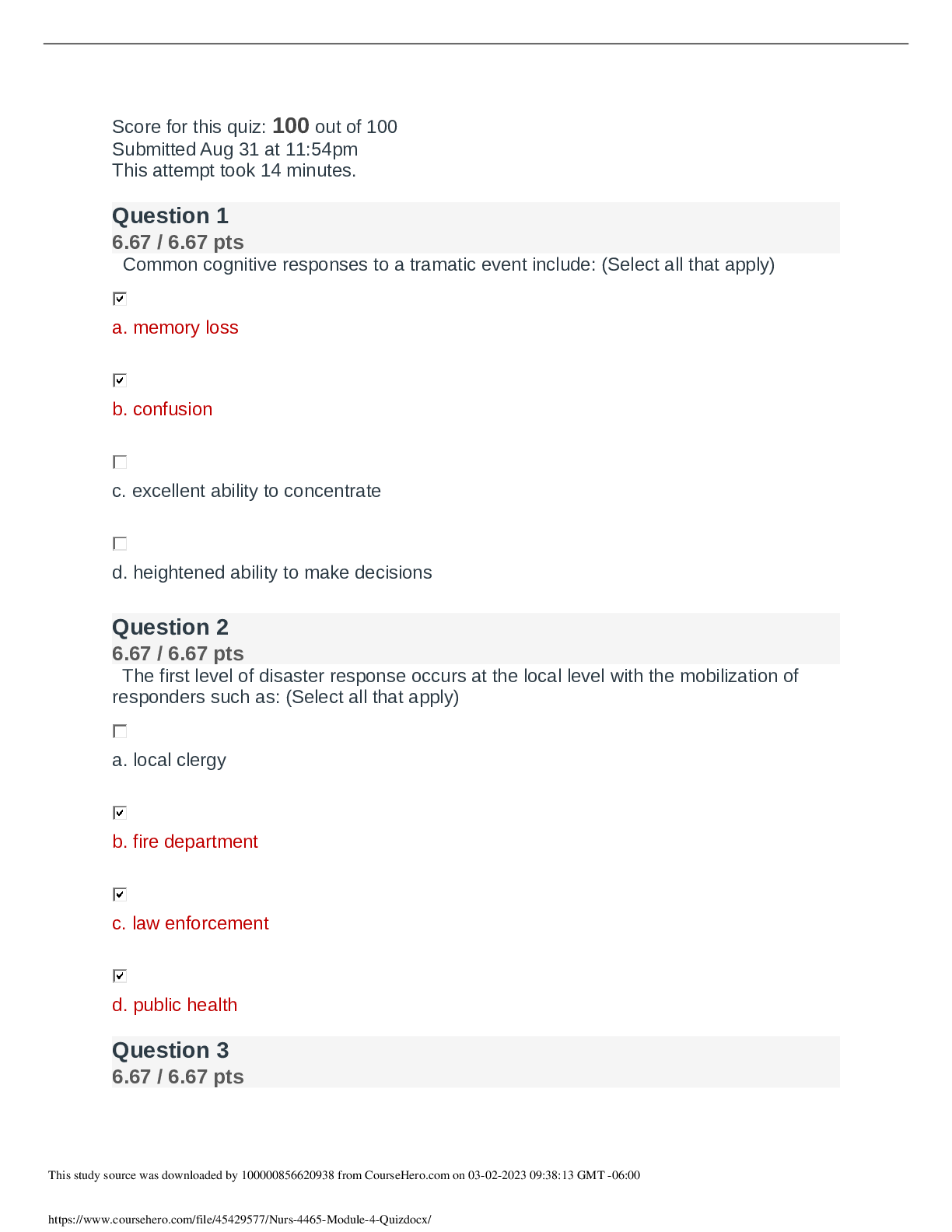
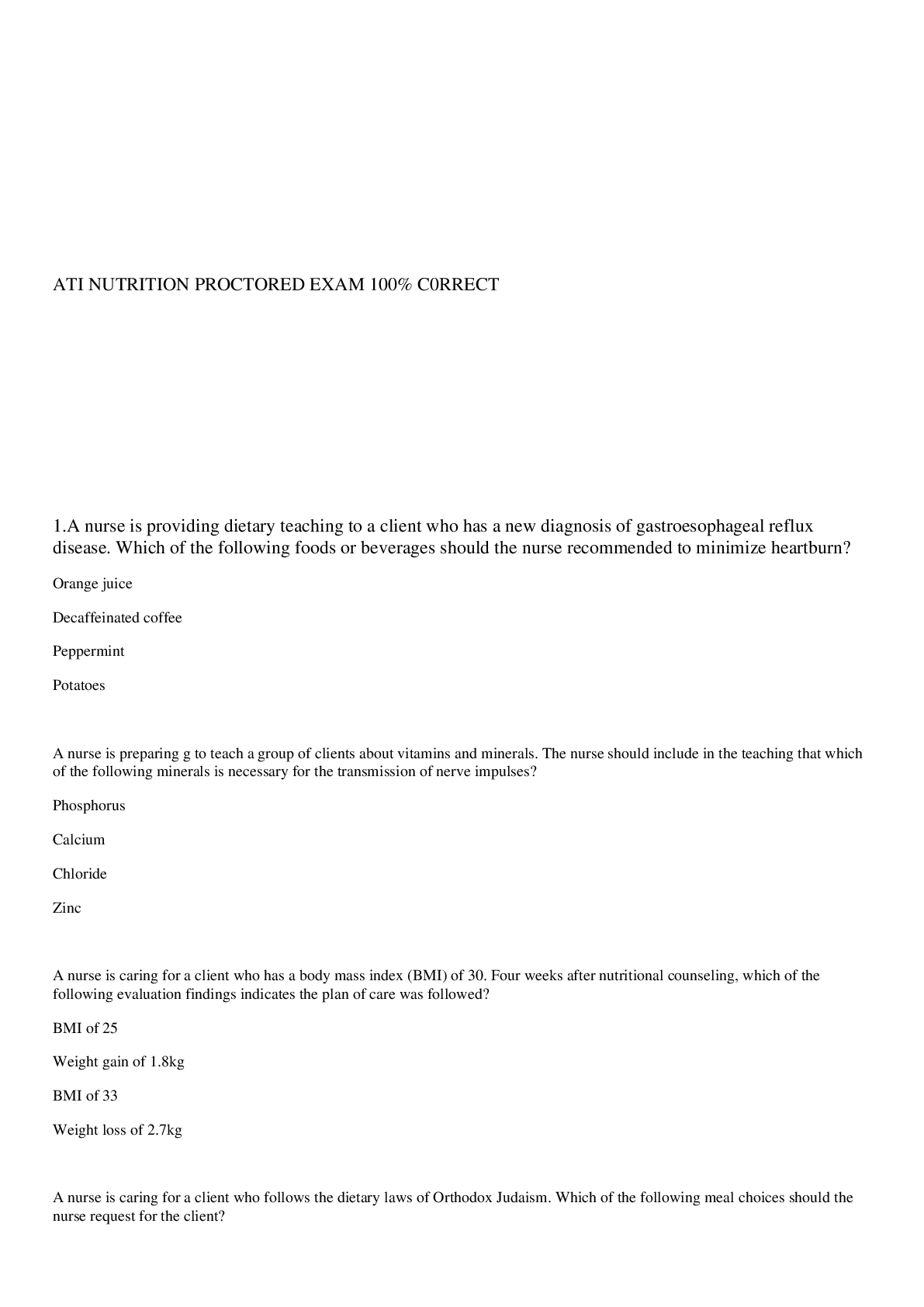
.png)
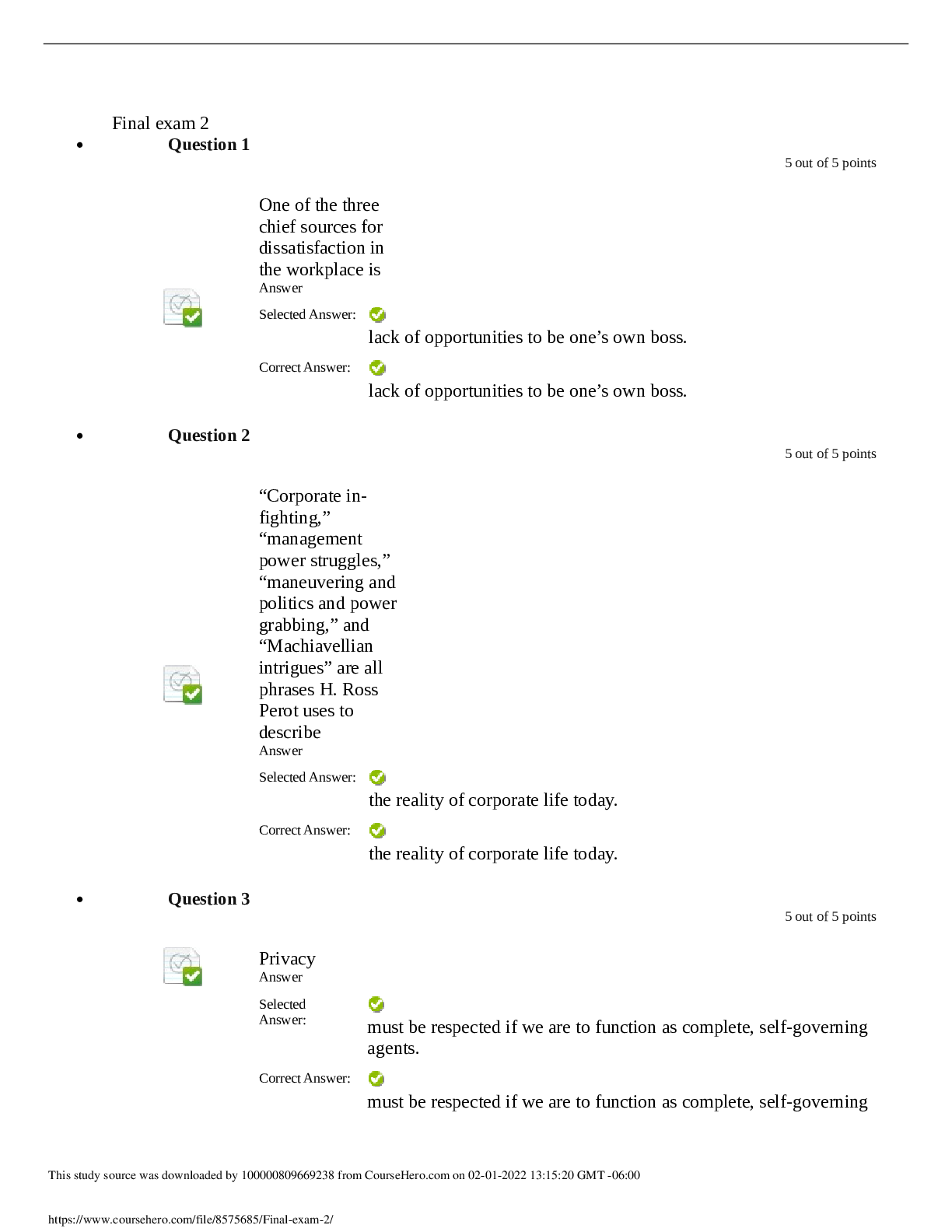
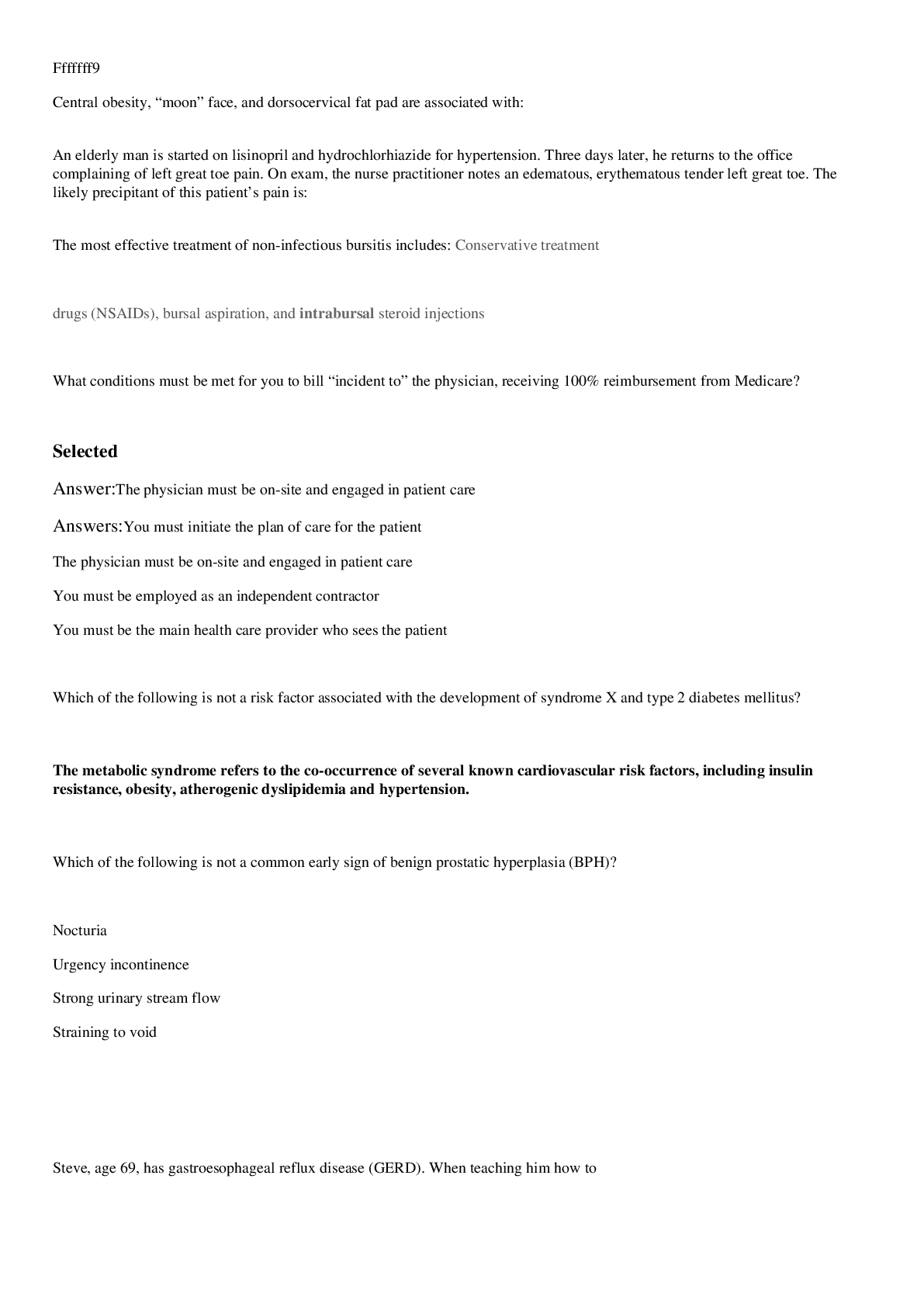

.png)
